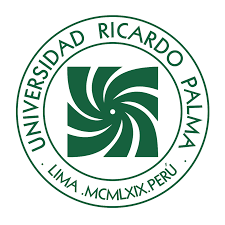Modeling a human–machine interface using electrooculographic communication represented by huffman code for people with disabilities of amyotrophic lateral sclerosis
DOI:
https://doi.org/10.31381/perfiles_ingenieria.v2i11.412Keywords:
Disabilities, impairments, disability, Amyotrophic Lateral Sclerosis (ALS), EOG (EOG), Huffman codeAbstract
People with disabilities related to amyotrophic lateral sclerosis (ALS) lose motor skills in their limbs and oral communication. However, their eye movements remain relatively intact and becomes the last resort for communication. The EOG (EOG) allows electrical signals from electrodes placed on the surface of the eye providing information on the direction of view with respect to a reference position. These signals obtained can be represented in language by Huffman code. The aim is to reduce the degree of disability of people with motor disabilities because of physical disabilities.
Downloads
References
Aho, A., Sethi, R. y Ullman, J. (2012). Compiladores, principios, técnicas y herramientas. México: Adison Wesley Longman.
Boden, B. (1994). Filosofía de la inteligencia artificial. México: Fondo de Cultura Económica.
Buendía, M., Vera, J. (2007). Redes de sensores y actuadores en domótica. Universidad politécnica de Cartagena. Recuperado de http//repositorio.bib.upct.es/dspace/bitstream/10317/402/1/2007
Brookshear, J. (1993). Teoría de la computación: lenguajes formales, autómatas y complejidad. México: Pearson.
Carrillo, F., Rubio, F. (2009). Modulo de detección, registro y presentación de señales electrooculográficas. Electrónica-UNMSM, 24, 3-12. Recuperado de http://Sisbib.unmsm.edu.pe/bibvirtualdata/publicaciones/ electronica/2009_n24
Chang, M., Liu, Ch. et al. (2007). Design and Evaluation of a DICOM compliant Videofluoroscopy Imaging System. En 9th Intern. Conf. e-Health Networking, Application and Services, 2007, 248-251. Recuperado de http://ieeexplore.ieee.org/xpls/abs all.jsp?arnumber=4265835
Cortez, A. (2012). Algorítmica, técnicas algorítmicas. Lima: CEPREDIM, 137-145.
Cortez, A. (2014). “Especificación de sistemas domoticos para reducir la minusvalía de personas con discapacidad y deficiencias”. Rev. Investig. Sist. e Informática, 11(1), 79-89.
Cortez, A. (2015). “Sistema de aprendizaje de patrones de navegación web mediante gramáticas probabilísticas de hipertexto”. INGE CUC, 11(1).
García. A. (2000). Nuevas tecnologías y personas con discapacidad. IMSERSO, ministerio de trabajo y asuntos sociales, Intervencion Psicologica. 9(3), 283-296.
Hernández, J., Ramírez, M. y Ferri, C. (2008). Introducción a la minería de datos (2a ed.). España: Pearson.
Hopcroft, J. E. (2005). Introducción a la teoría de autómatas, lenguajes y computación (3a ed.). Madrid: Pearson.
Palma, J. y Martin, R. (2008). Inteligencia artificial. Madrid: McGrawHill.
Penrose, R. (1996). Las sombras de la mente. Barcelona: Crítica Grijalbo.
Rubio, F., Carrillo, F. (2012). Interface usua-red de telefonía IP para pacientes tetrapléjicos basado en señales electrooculograficas. Electrónica-UNMSM Revista Electrónica, 2012.
Rueda, R. (s/f). Formación, hipertexto y ambientes de aprendizaje. Revista educación y pedagogía, 14.
Russell, S. y Norvig, P. (2004). Inteligencia artificial, un enfoque moderno (2a ed.). México: Pearson.
Sánchez, J. (1999). Estimación de gramáticas incontextuales probabilísticas y su aplicación en modelización del lenguaje. (Tesis para optar el grado de Doctor en Informática) Universidad Politécnica de Valencia, España.
Soletta, J. (2009). Análisis de señales electrooculográficas evocadas por movimientos dinámicos del ojo. Dpto. de Bioingeniería, Facultad de Ciencias Exactas. Rosario: Universidad Nacional de Tucumán.
Ley general de personas con discapacidad, ley 27050. Lima, Perú. Recuperado de https://www.peru.gob.pe
Downloads
Published
How to Cite
Issue
Section
License
Copyright (c) 2016 Augusto Cortez Vásquez, Virginia Vera Pomalaza

This work is licensed under a Creative Commons Attribution 4.0 International License.
In the event that the manuscript is approved for its next publication, the authors retain the copyright and assign to the journal the right of publication, edition, reproduction, distribution, exhibition and communication in the country of origin, as well as in the abroad, through print and electronic media in different databases. Therefore, it is established that after the publication of the articles, the authors may make other types of independent or additional agreements for the non-exclusive dissemination of the version of the article published in this journal (publication in books or institutional repositories), provided that it is explicitly indicated that the work has been published for the first time in this journal.
To record this procedure, the author must complete the following forms:

1.png)








